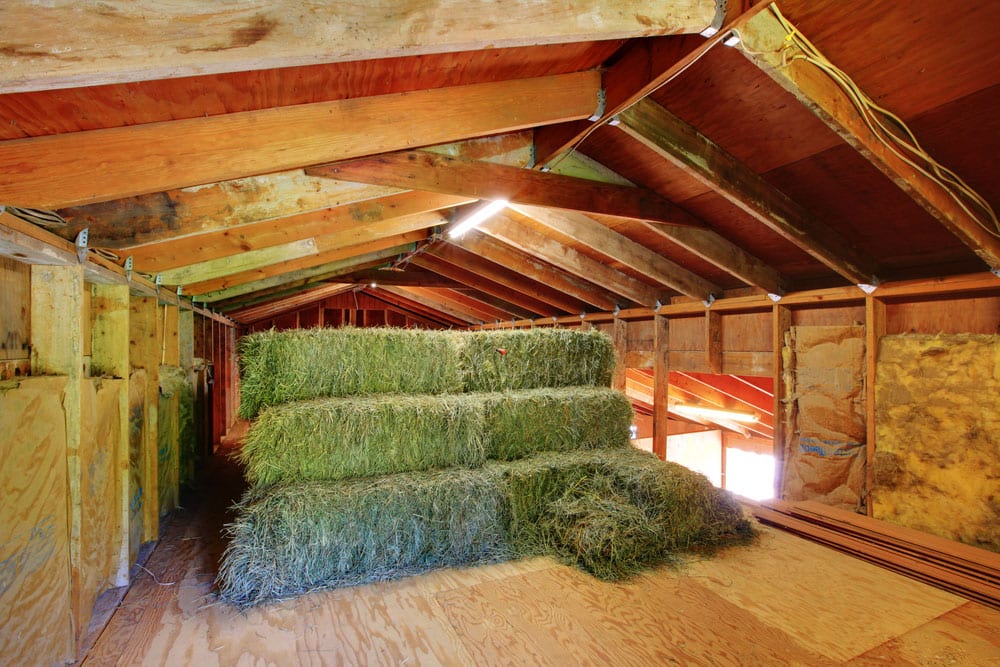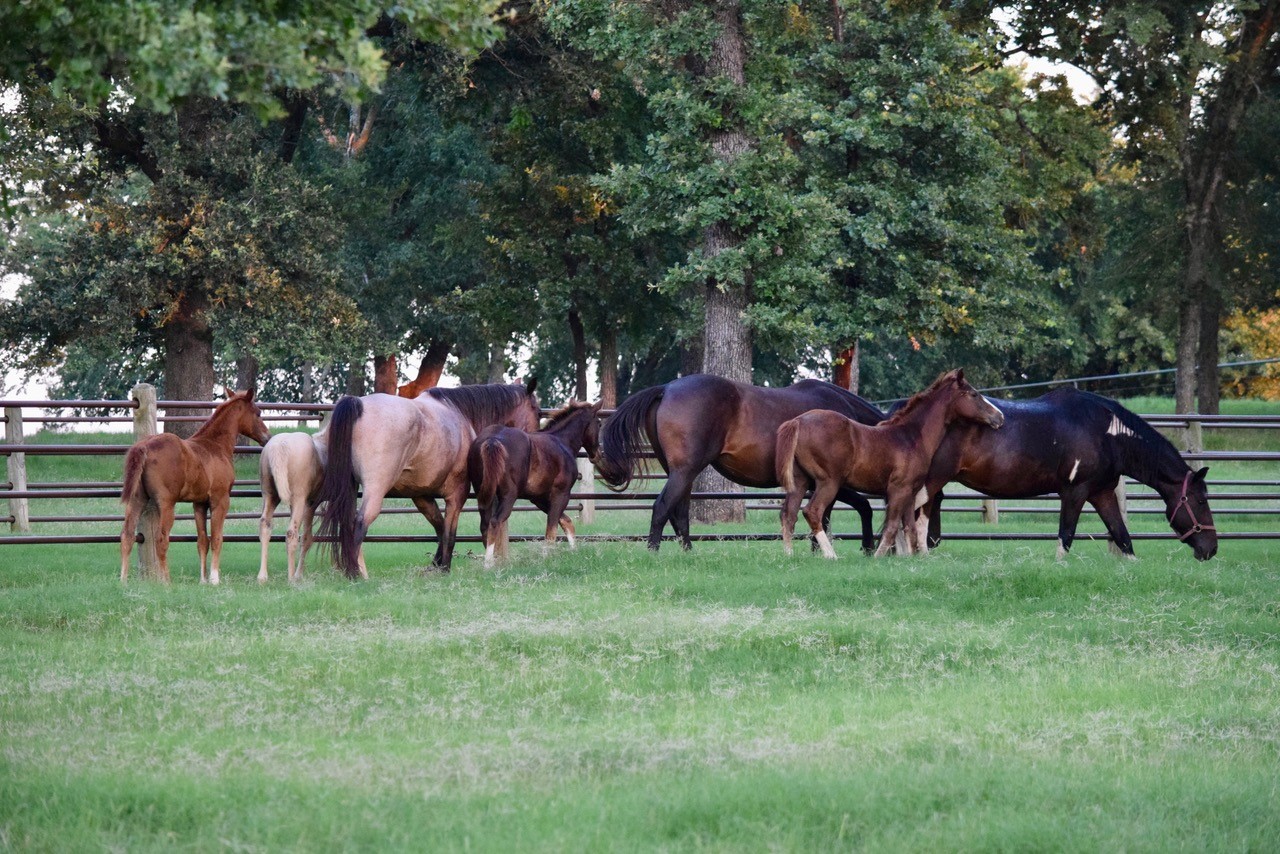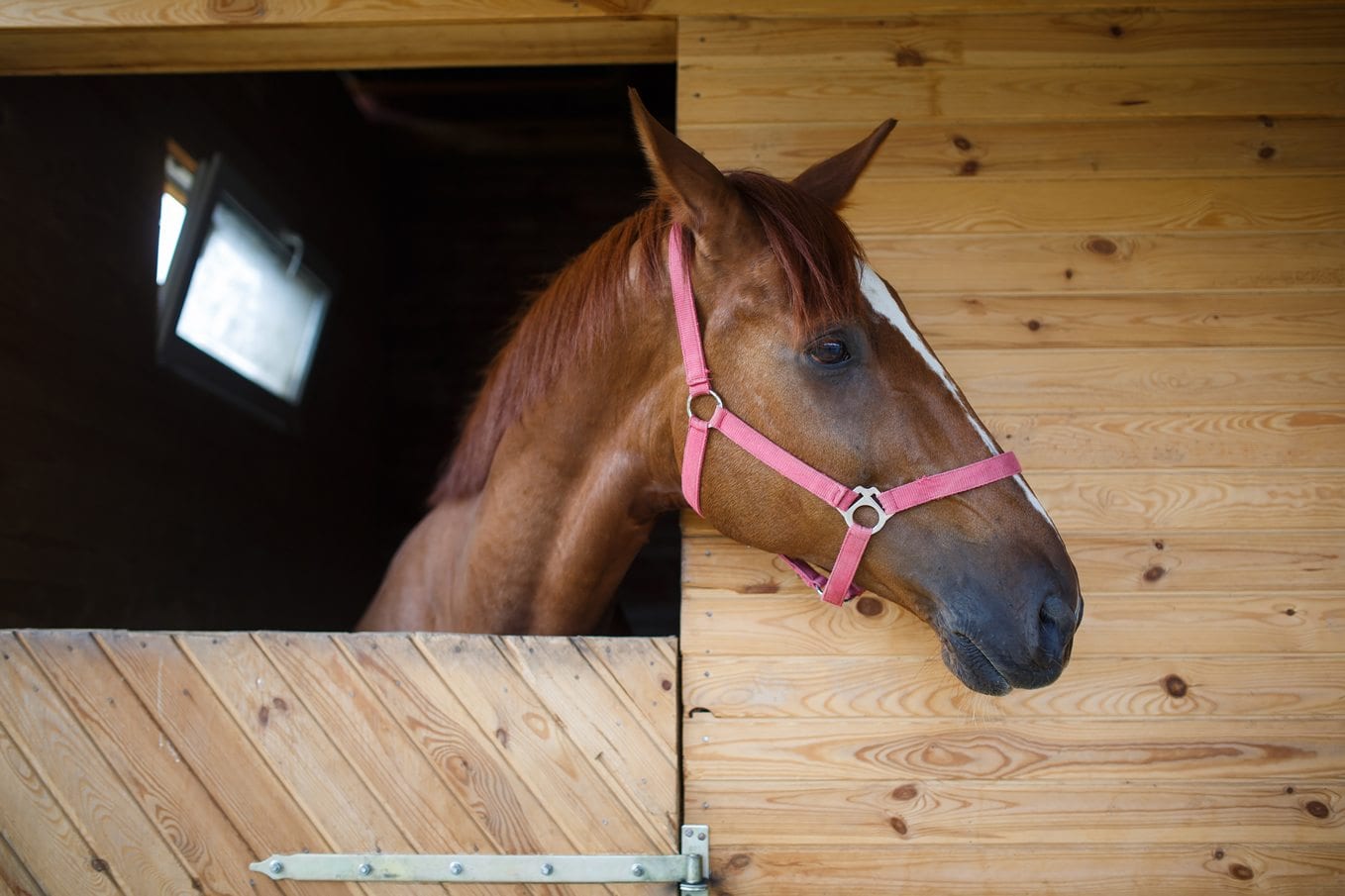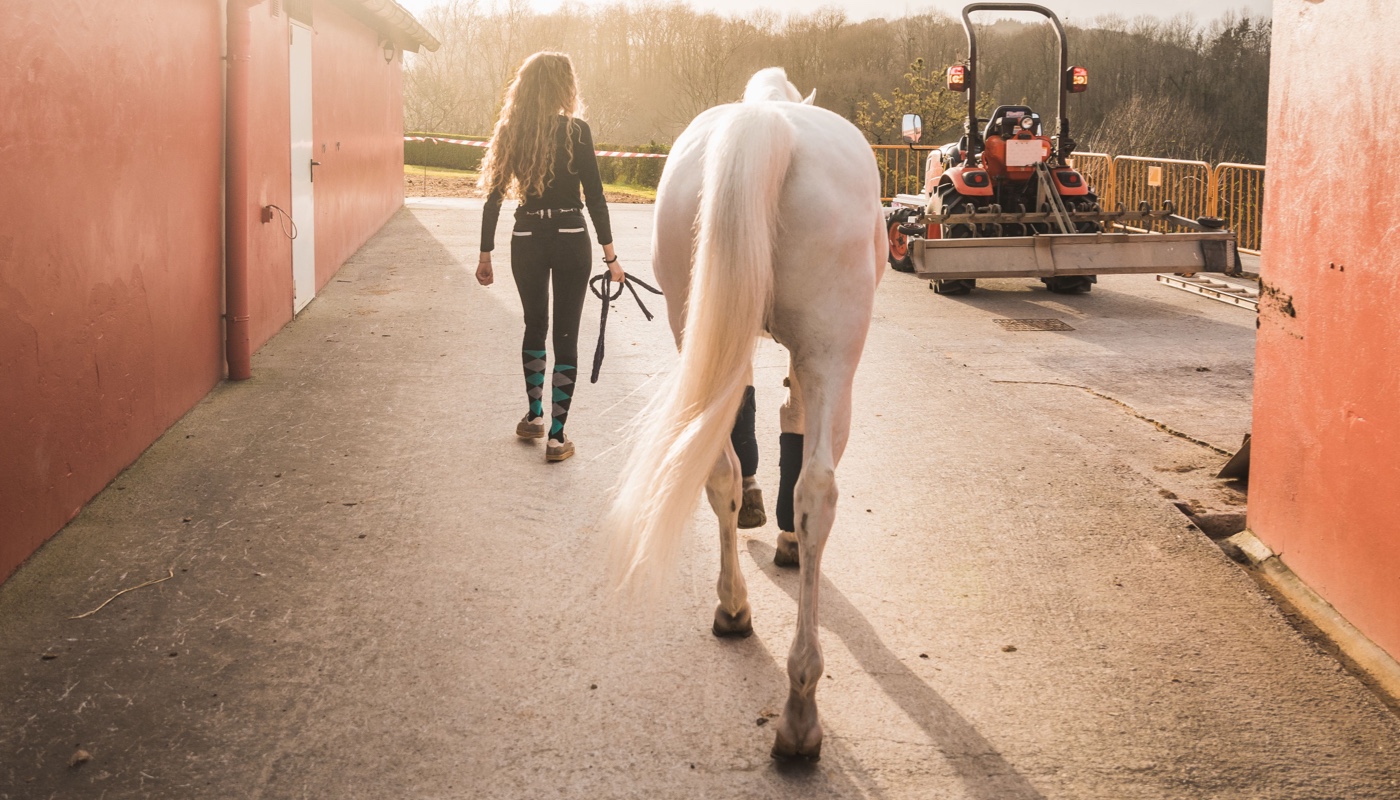If you’ve been tuning into this series about the importance of hay in your horse’s diet, you probably don’t need to be told that hay is for horses. (If you have any doubts, feel free to read up on the different types of hay, how to choose the best hay for your horse and why it’s so important.) But what good will that knowledge do you if the hay you buy or grow is allowed to get wet, moldy or dusty? (Answer: none!) And it certainly won’t do your horse any good either.
So in this next post, we’re tackling another funny saying: “Make hay while the sun shines.” Because just as “hay is for horses” is absolutely true, so is making hay during dry weather — and maybe not just for the reasons you might think.
Make Hay While the Sun Shines
You probably already know that baling in wet conditions or getting rain on a freshly mown field can cause hay bales to mold, making them unpalatable or unsafe for consumption. But there are other dangers involved with baling wet, too: namely, hay fires caused by spontaneous combustion.
We use the expression to “make hay while the sun shines” because the sun is a key component in “curing” or “sweating” hay for safe longer-term storage. Hay should be cut only after the sun has been shining on it for a few successive days, as sunshine helps to dry out the stems of hay and lowers overall moisture content in the crop. Additional sun is necessary after a field has been cut and before it’s baled to continue the drying process. Ideal weather conditions are days with less than 50 percent relative humidity and some wind to help speed the process.
Experienced growers can often assess the hay for moisture content by look and feel; electronic moisture meters are an even better bet. Ideally, a field’s maximum moisture content at the time of baling should be approximately 18-20 percent for small two-tie bales, 16-18 percent for three-tie bales and 14-15 percent for large bales.
These numbers can be used as a general estimate for moisture content, but remember that the larger the bale and the greater its density, the larger the risk of a hay fire by spontaneous combustion. Dry, cured hay discourages the multiplication of the microorganisms responsible for creating the heat and fermentation cycle that can lead to combustion — which is an extremely compelling reason to make hay while the sun shines.
Store Hay Correctly for Better Nutrition and Palatability
Making sure that your hay was baled dry and cured properly is the first step in creating a safe hayloft. Proper storage can also help ensure that hay retains the most possible nutrition content, and that dry hay stays dry for ongoing fire protection.
Recall for a moment the myth that horses should not be fed round bales. In reality, round bales can be a perfectly fine way to achieve a “forage-first” feeding plan — if they’re stored inside or are covered appropriately. The same is true with more traditional 50-pound square bales.
- Round bales stored outside should be protected from ground moisture and runoff by being placed on a bed of gravel, old tires, poles or pallets and covered with a waterproof layer. Be aware that stacking round bales generally traps moisture and limits drying, increasing storage losses and the likelihood of fire.
- Square bales should be stored inside in a place that is not susceptible to roof leaks or storm runoff (that’s why it’s usually stored off the ground in a lofted area). Never stack bales all the way up to the ceiling, as they could make contact with a light, and will block circulation.
- ALL hay should be kept dry and checked frequently for excess heat. Some heating (or “sweating”) will inevitably occur during the first few weeks as bales experience the natural heat cycle associated with microorganisms and fermentation. If no excess water is present to create a favorable breeding ground, the microorganisms will gradually be killed off and the hay’s temperature will stabilize at an ambient temperature.
One precaution many horse owners take is to store hay in a building other than the main barn where horses are kept. No one wants to envision a worst-case scenario, but should hay catch fire in an exterior building, it will buy you some time to move your horses to safety.
Check the Moisture and Temperature of Hay Bales
The electronic moisture meter used by balers in the field can also be a useful tool in your hayloft. Be sure to test a wide range of bales to seek out “slugs” — or those bales with abnormally high moisture readings resulting from roof leaks or a wet spot in the hay field.
While most hay baled under favorable conditions will reach a normalized temperature after curing for a few weeks, it’s imperative to keep monitoring temperatures. This chart (Table 2) from the National Agriculture Safety Database can help be sure your hay bales are within an acceptable temperature range.
To test temperature without a thermometer, push or drive a 3/8-inch to 1-inch diameter metal rod into the hay and leave it for 10-15 minutes. If you can hold the rod in your bare hand comfortably when you remove it, the temperature is approximately below 130 degrees Fahrenheit. If it’s uncomfortable to hold, the temperature is probably between 130-160 degrees; if it’s too hot to hold, a fire is imminent and must be addressed immediately. Call the fire department and never move overheated or smoldering hay, as this will expose it to the oxygen it needs to continue burning. Hay that has been damaged by heat, smoke or water must be removed to a safe place and disposed of.
Finally, Use Good Common Sense
Hay quality deteriorates over time, so fill your loft to make it easiest to feed older bales first before moving onto this year’s crop. Protect it from moisture, and also from rodents, whose droppings can contaminate hay. Storing hay on pallets or boards can help increase ventilation, but avoiding packing your loft to the rafters, as this will merely inhibit peak ventilation, affecting your entire barn.
Feeding hay may seem like a no-brainer (and it is!), but being strategic about how, where and when you store it will ensure that it retains its very important status in your horse’s diet.




